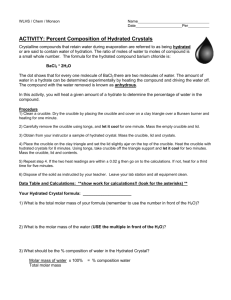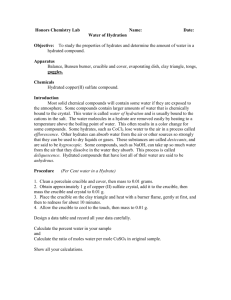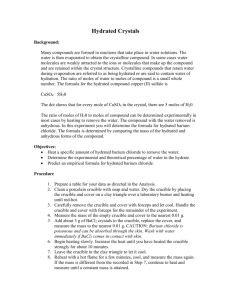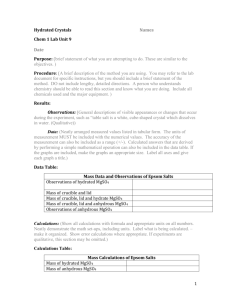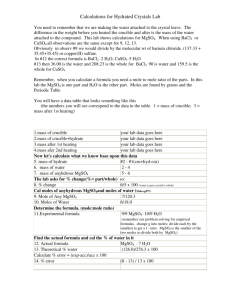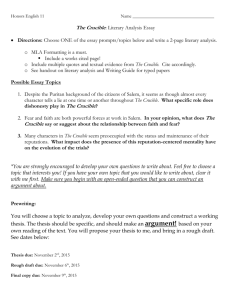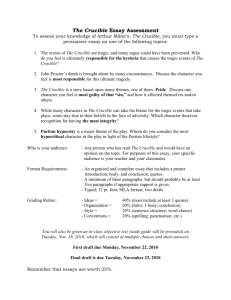Formula for a Hydrated Crystal
advertisement
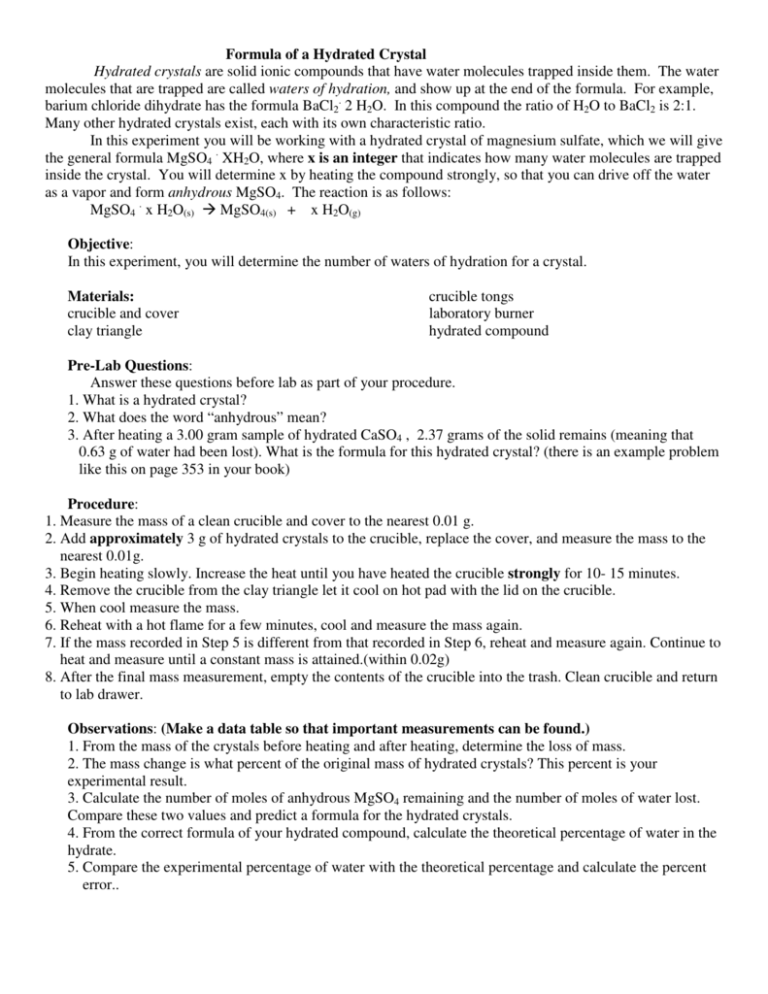
Formula of a Hydrated Crystal Hydrated crystals are solid ionic compounds that have water molecules trapped inside them. The water molecules that are trapped are called waters of hydration, and show up at the end of the formula. For example, barium chloride dihydrate has the formula BaCl2. 2 H2O. In this compound the ratio of H2O to BaCl2 is 2:1. Many other hydrated crystals exist, each with its own characteristic ratio. In this experiment you will be working with a hydrated crystal of magnesium sulfate, which we will give the general formula MgSO4 . XH2O, where x is an integer that indicates how many water molecules are trapped inside the crystal. You will determine x by heating the compound strongly, so that you can drive off the water as a vapor and form anhydrous MgSO4. The reaction is as follows: MgSO4 . x H2O(s) MgSO4(s) + x H2O(g) Objective: In this experiment, you will determine the number of waters of hydration for a crystal. Materials: crucible and cover clay triangle crucible tongs laboratory burner hydrated compound Pre-Lab Questions: Answer these questions before lab as part of your procedure. 1. What is a hydrated crystal? 2. What does the word “anhydrous” mean? 3. After heating a 3.00 gram sample of hydrated CaSO4 , 2.37 grams of the solid remains (meaning that 0.63 g of water had been lost). What is the formula for this hydrated crystal? (there is an example problem like this on page 353 in your book) Procedure: 1. Measure the mass of a clean crucible and cover to the nearest 0.01 g. 2. Add approximately 3 g of hydrated crystals to the crucible, replace the cover, and measure the mass to the nearest 0.01g. 3. Begin heating slowly. Increase the heat until you have heated the crucible strongly for 10- 15 minutes. 4. Remove the crucible from the clay triangle let it cool on hot pad with the lid on the crucible. 5. When cool measure the mass. 6. Reheat with a hot flame for a few minutes, cool and measure the mass again. 7. If the mass recorded in Step 5 is different from that recorded in Step 6, reheat and measure again. Continue to heat and measure until a constant mass is attained.(within 0.02g) 8. After the final mass measurement, empty the contents of the crucible into the trash. Clean crucible and return to lab drawer. Observations: (Make a data table so that important measurements can be found.) 1. From the mass of the crystals before heating and after heating, determine the loss of mass. 2. The mass change is what percent of the original mass of hydrated crystals? This percent is your experimental result. 3. Calculate the number of moles of anhydrous MgSO4 remaining and the number of moles of water lost. Compare these two values and predict a formula for the hydrated crystals. 4. From the correct formula of your hydrated compound, calculate the theoretical percentage of water in the hydrate. 5. Compare the experimental percentage of water with the theoretical percentage and calculate the percent error.. 1. 2. 3. 4. 5. 6. 7 8. 9. 10. Mass of empty crucible Mass of Crucible with Hydrate Mass of Crucible after first heating Mass of hydrate Mass of JUST the anhydrous crystal Mass of water lost during heating Moles of anhydrous MgSO4 Moles of water lost Ratio of moles anhydrous : moles water Formula for the hydrated crystal Is this value measured or calculated? M M M C C C C C C C Questions: 1. Why should the mass of the crucible be measured immediately after the crucible cools, and not later? 2. Does the reaction given in the introduction to this experiment describe a chemical or a physical change? Explain. 3. What is your experimental error for this lab? (Show your calculations) Don’t forget a conclusion

